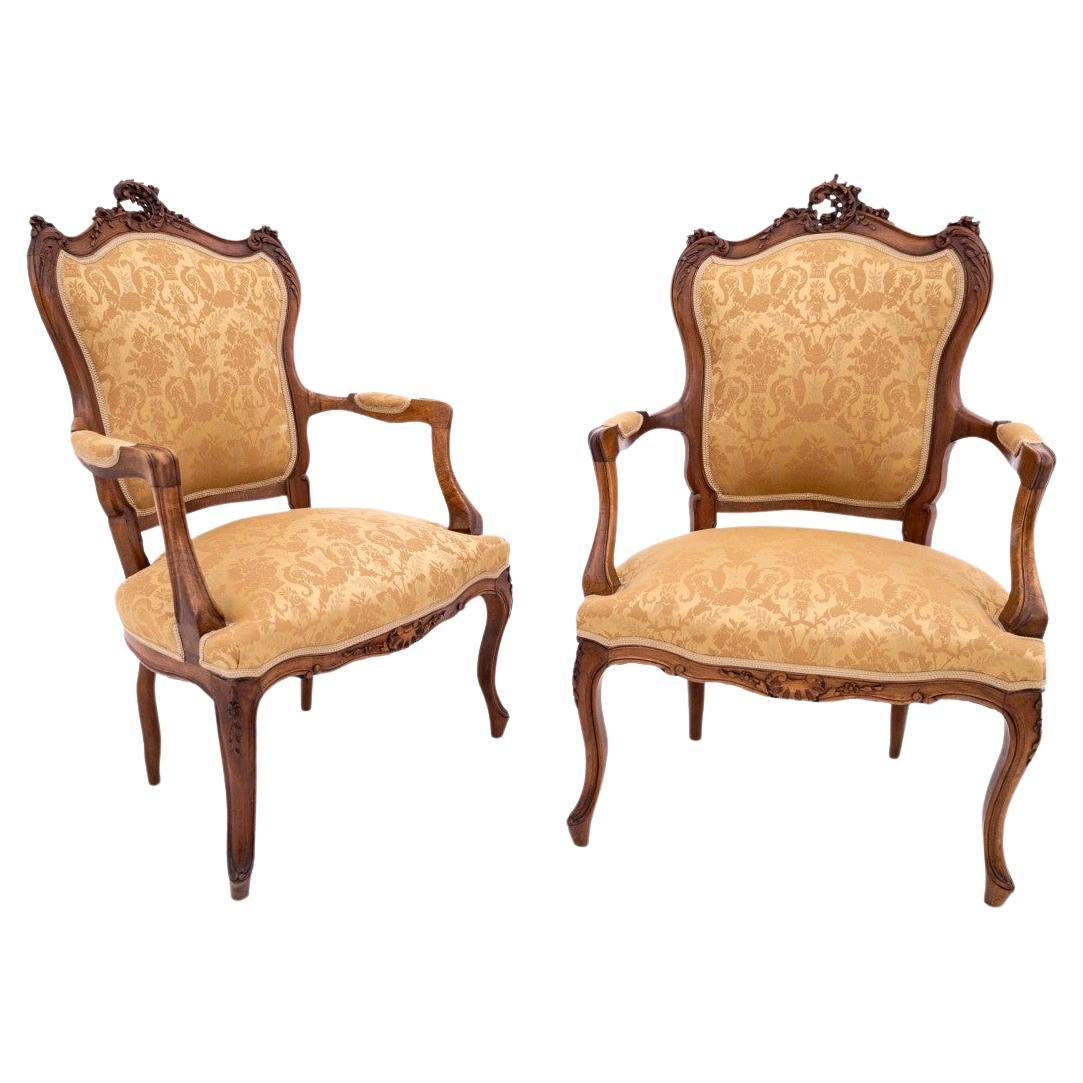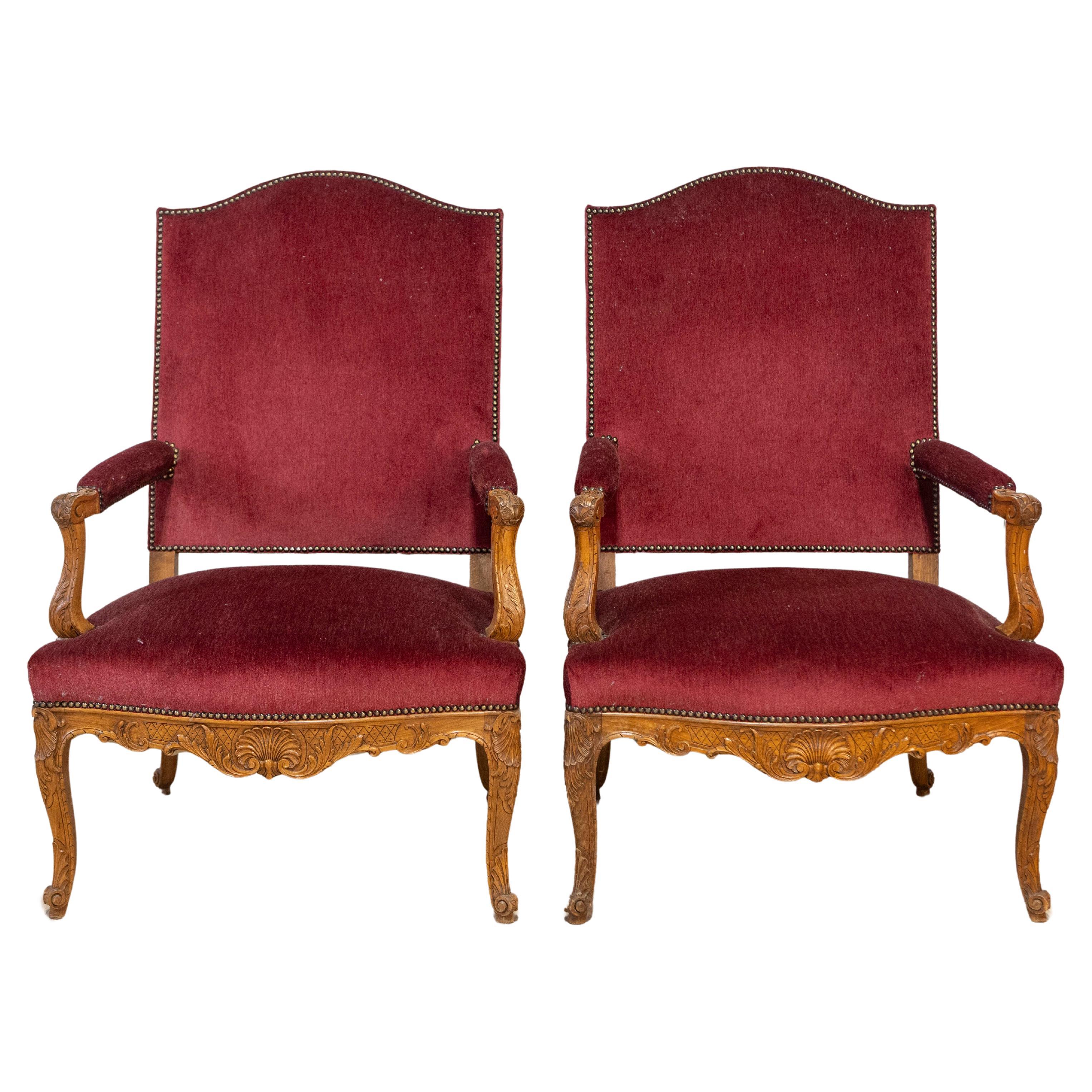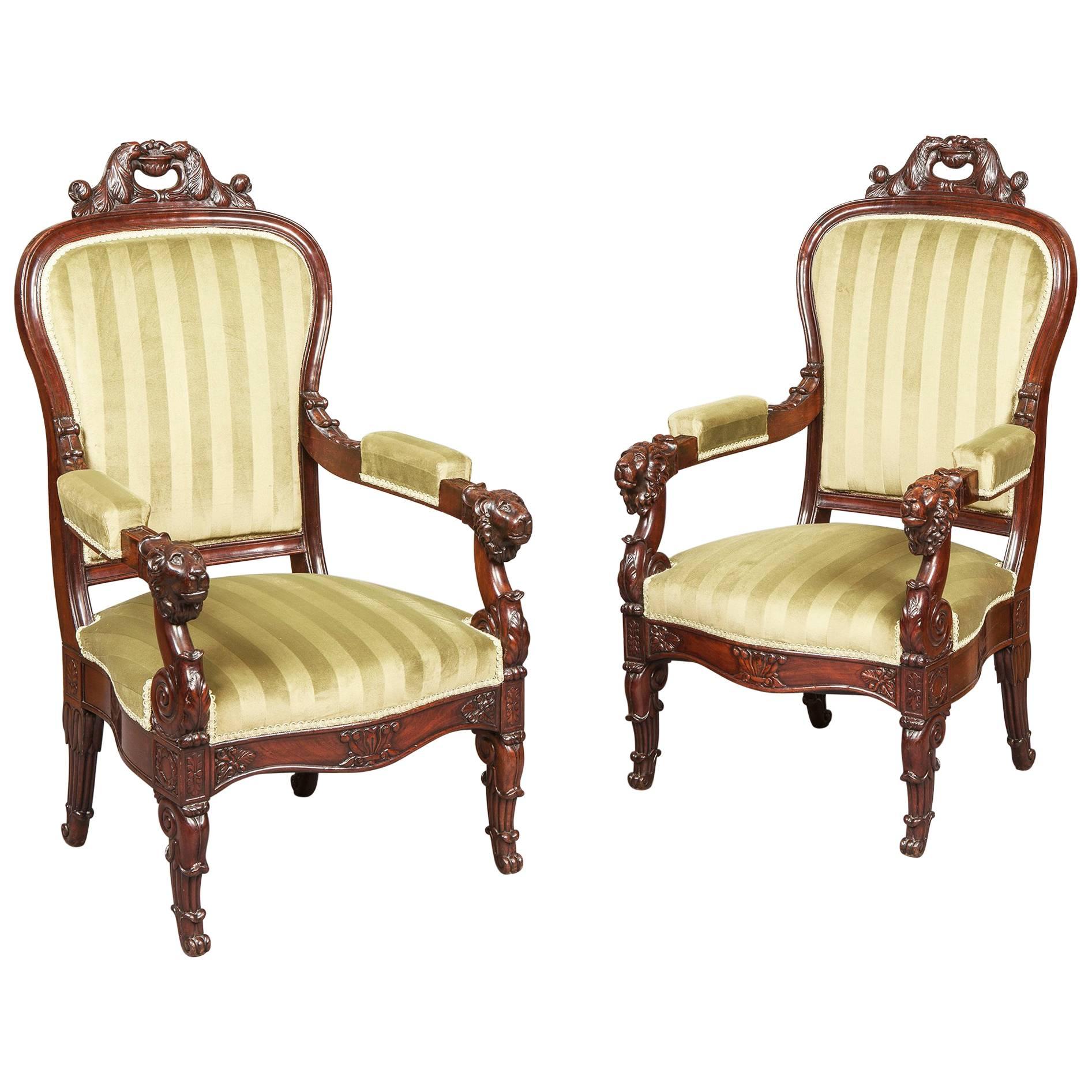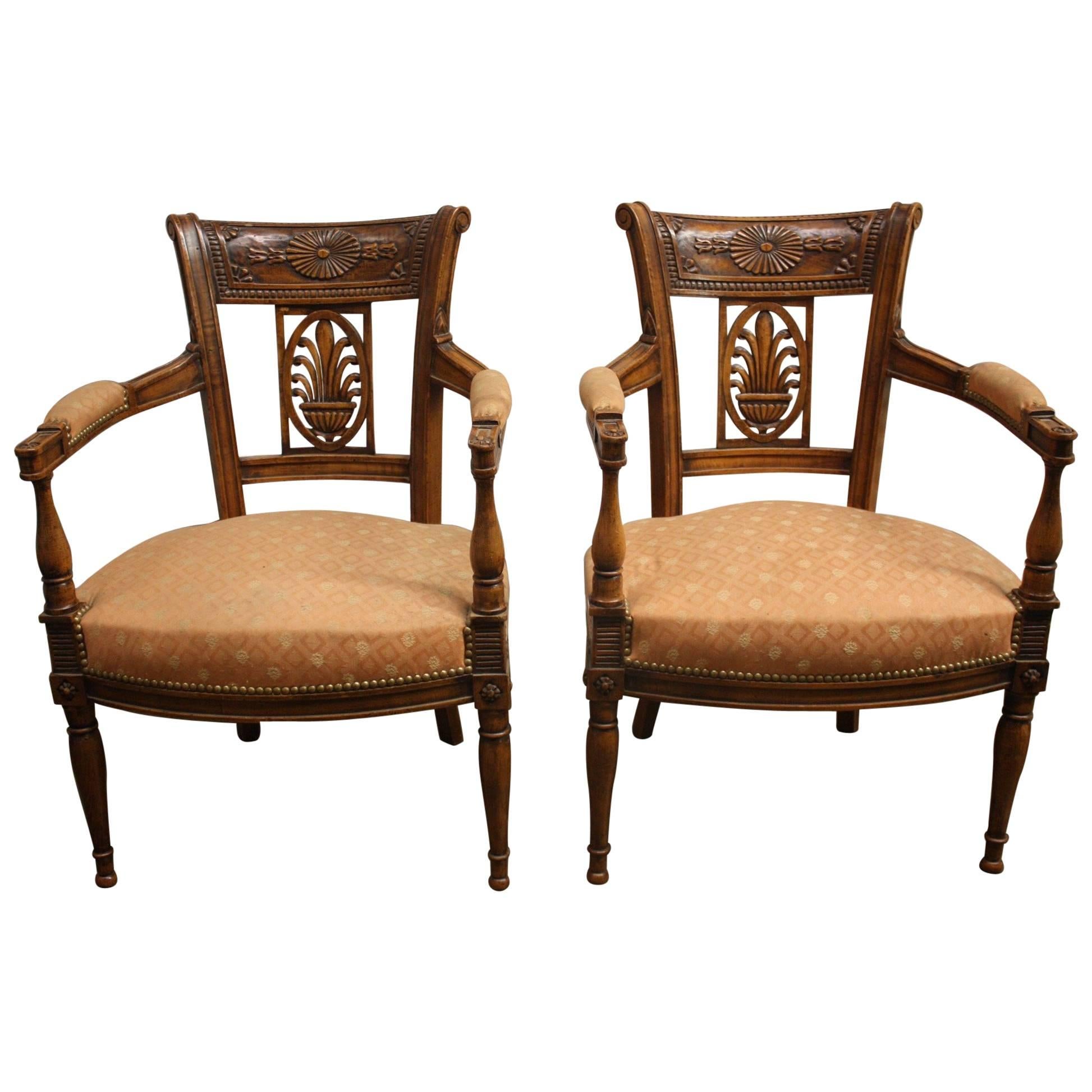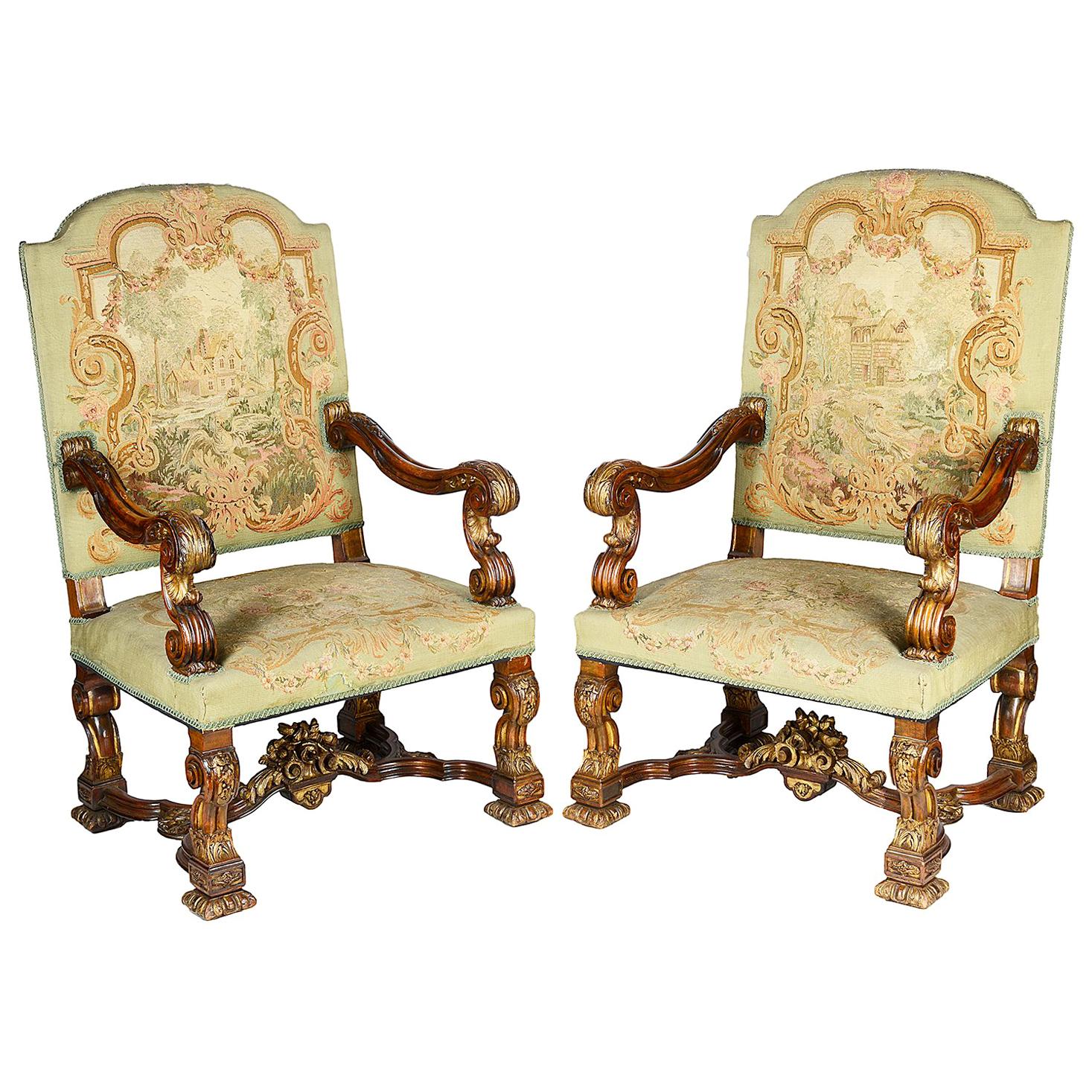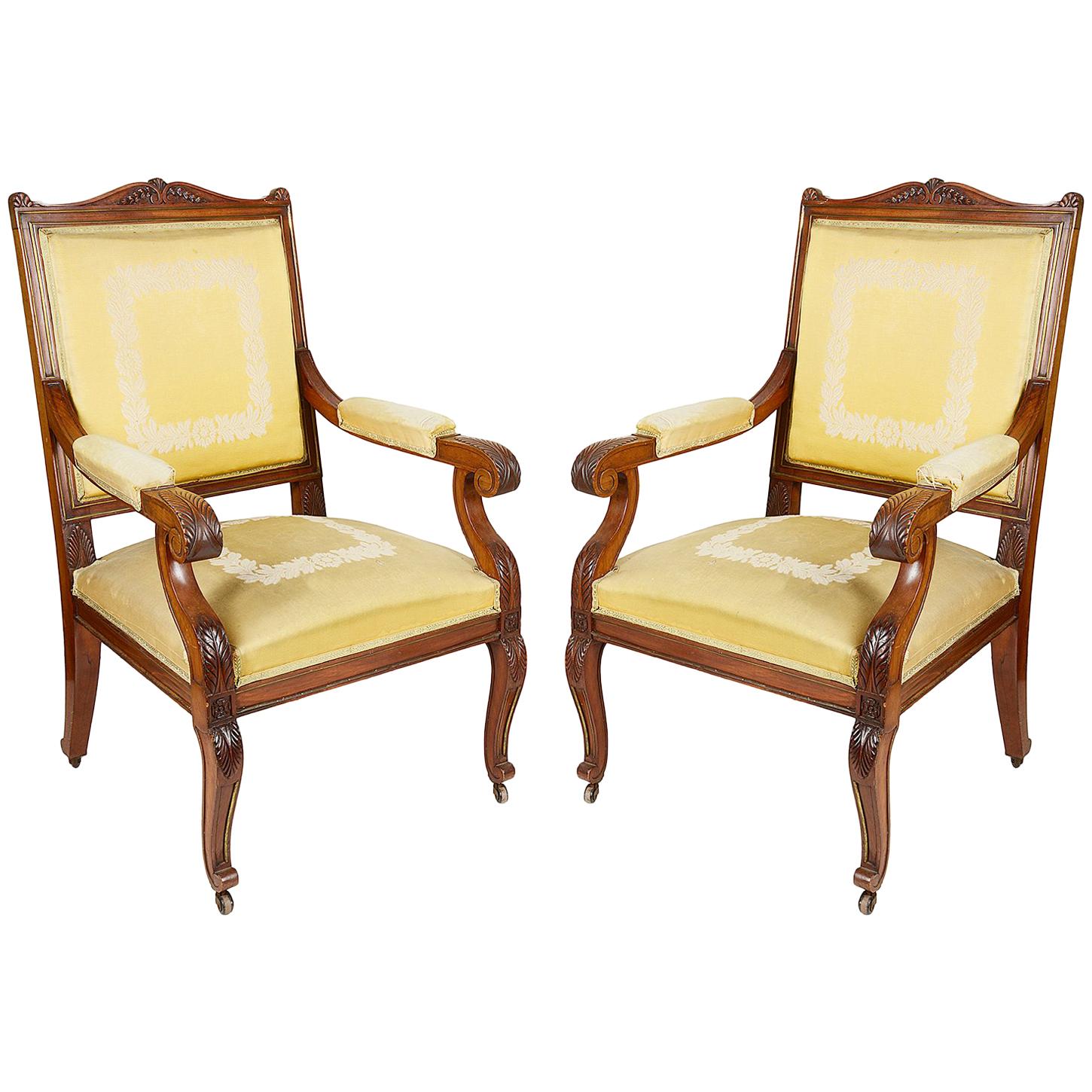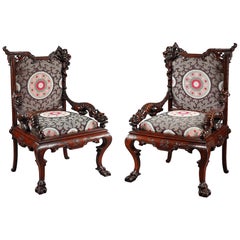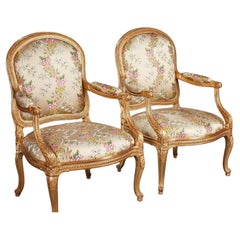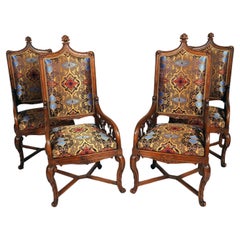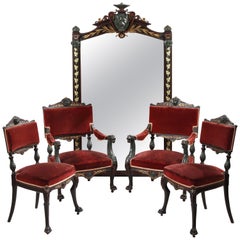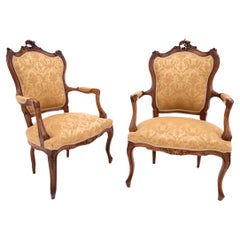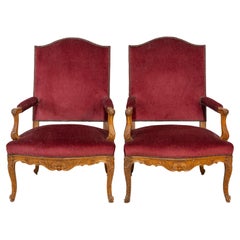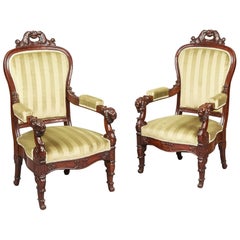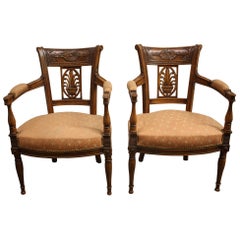Items Similar to Pair of Armchairs Attributed to H.A. Fourdinois, France, c1870
Want more images or videos?
Request additional images or videos from the seller
1 of 9
Pair of Armchairs Attributed to H.A. Fourdinois, France, c1870
$17,460.70per set
£12,918.74per set
€14,500per set
CA$24,142.53per set
A$26,505.48per set
CHF 13,827.97per set
MX$320,753.26per set
NOK 173,312.11per set
SEK 163,305.58per set
DKK 110,403.41per set
About the Item
Important pair of armchairs attributed to H.A. Fourdinois, with a flat back in “chapeau de gendarme” centered with a carved and foliated cartouche, joining padded scroll armrests carved with acanthus leaves. Standing on two characteristic Renaissance style fluted forelegs of the Fourdinois “savoir-faire”, and “sabre” back feet.
The Fourdinois Company was founded in 1835 by Alexandre-Georges Fourdinois, (1799-1871). The Universal Exhibition held in London in 1851 was undoubtedly their first great artistic and public success. Winning the Great medal for a neo-Renaissance buffet triggered a competition among other cabinetmakers, as the press was unanimously greeting their success. His son Henri-Auguste (1830-1907) was taught design by the architect Duban, then by the silversmith Morel in London, before working with the bronze founder Paillard. He joined the firm in 1860. His talent and the high quality of his designs drew attention at the 1862 World Exhibition in London, where the jury awarded him two medals for “Excellence in Composition and Execution”. Henri-Auguste, now sole in charge, brought the firm to the summit of its achievements at the 1867 Universal Exhibition in Paris by winning the Grand Prix (classes 14 and 15) as well as at the 1878 Exhibition. The 1862-1880 period marks truly the peak for the Fourdinois house, which remains for many cabinet-makers, whether French, English or American, an example to follow.
- Attributed to:Henri-Auguste Fourdinois (Cabinetmaker)
- Dimensions:Height: 45.28 in (115 cm)Width: 27.17 in (69 cm)Depth: 21.26 in (54 cm)
- Sold As:Set of 2
- Style:Renaissance (In the Style Of)
- Materials and Techniques:
- Place of Origin:
- Period:
- Date of Manufacture:circa 1870
- Condition:Wear consistent with age and use.
- Seller Location:PARIS, FR
- Reference Number:1stDibs: LU3860321717422
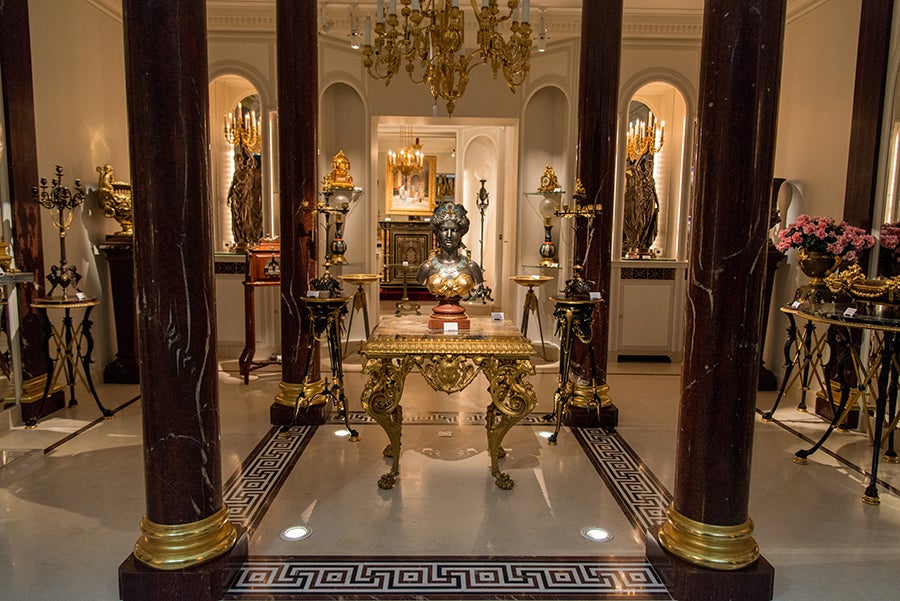
About the Seller
4.9
Vetted Professional Seller
Every seller passes strict standards for authenticity and reliability
Established in 1997
1stDibs seller since 2018
87 sales on 1stDibs
Typical response time: <1 hour
Associations
International Confederation of Art and Antique Dealers' Associations
- ShippingRetrieving quote...Shipping from: Saint Ouen, France
- Return Policy
Authenticity Guarantee
In the unlikely event there’s an issue with an item’s authenticity, contact us within 1 year for a full refund. DetailsMoney-Back Guarantee
If your item is not as described, is damaged in transit, or does not arrive, contact us within 7 days for a full refund. Details24-Hour Cancellation
You have a 24-hour grace period in which to reconsider your purchase, with no questions asked.Vetted Professional Sellers
Our world-class sellers must adhere to strict standards for service and quality, maintaining the integrity of our listings.Price-Match Guarantee
If you find that a seller listed the same item for a lower price elsewhere, we’ll match it.Trusted Global Delivery
Our best-in-class carrier network provides specialized shipping options worldwide, including custom delivery.More From This Seller
View AllPair of Aesthetic Movement Armchairs Attributed to G.Viardot, France, Circa 1880
By Gabriel Viardot
Located in PARIS, FR
These armchairs made of tinted wood are to be linked to another pair of armchairs executed by Gabriel Viardot, and now exhibited at the Decorative Arts Museum in Paris (Inv. 2006.105.1.2). They present a similar asymmetric design and an equal carving quality including the winding dragon on the back. (see picture attached)
Gabriel Viardot career began as a wood carver and he produced small furniture, sculpturally carved with naturalistic motifs and animals. In the 1855 Exposition Universelle in Paris, his finely sculpted objects were well received. However, with the increasing importation of similarly produced Swiss and German articles, he found less opportunity for these and decided to innovate. G. Viardot succeeded to his father’s business in 1861 installed rue Rambuteau in Paris, circa 1870 he turned to the idea of producing “Meubles genre Chinois et Japonais”. The taste in Europe for exotic furniture...
Category
Antique 1880s French Aesthetic Movement Armchairs
Materials
Fabric, Wood
Beautiful Pair of Transition Style Armchairs "A Chassis", France, Circa 1880
By Michel Gourdin
Located in PARIS, FR
Beautiful pair of Transition style armchairs "à la Reine" and "à châssis", in carved and gilded wood and decorated with a flowery lampas by the Maison Tassin...
Category
Antique 1880s French Armchairs
Materials
Giltwood
Set of Four Neo-Gothic Armchairs, France, Circa 1860
Located in PARIS, FR
Rare set of four neo-Gothic armchairs in carved wood with straight backs, framed by a twisted frieze decorated with foliage at the corners, and ending in a point topped with a seed. ...
Category
Antique 1860s French Gothic Revival Armchairs
Materials
Silk, Wood
$34,319 / set
Rare Neo-Pompeian Salon Suite Attributed to J-P Mazaroz, France, Circa 1860
Located in PARIS, FR
Neo-Pompeian salon attributed to Paul Mazaroz, composed of two armchairs, two chairs and a wooden mirror embellished with a gilded decor on a black lacquered background. A patinated ...
Category
Antique 1860s French Living Room Sets
Materials
Bronze
$14,480 Sale Price / set
35% Off
Louis XV Style 3 pieces Salon Set "à chassis", France, Circa 1880
Located in PARIS, FR
Sofa = Height : 100 cm (39,3 in.) ; Length : 130 cm (51,2 in.) ; Depth : 53 cm (20,8 in.)
Armchairs = Height : 100 cm (39,3 in.) ; Width : 71 cm (27,9 in.) ; Depth : 57 cm (22,4 in.)
Charming Louis XV style salon...
Category
Antique 1880s French Louis XV Living Room Sets
Materials
Wood
$6,261 Sale Price / set
20% Off
6 Pieces Salon, L. Jallot, France, Circa 1925
By Léon Jallot
Located in PARIS, FR
Charming Art Deco salon set including a marquise, a pair of armchairs, a pair of chairs and a stool. They are composed of a gondola-shaped backrest ...
Category
Vintage 1920s French Art Deco Armchairs
Materials
Fabric, Wood
$4,046 Sale Price / set
67% Off
You May Also Like
A pair of antique armchairs, France, around 1870.
Located in Chorzów, PL
Antique armchairs from the 19th centuries, France.
Dimensions: height 99 cm / seat height. 44 cm / width 64 cm / depth 60 cm
Category
Antique 1870s French Louis XV Armchairs
Materials
Walnut
Pair of 19th Century French Arm Chairs
Located in Atlanta, GA
This stunning pair of 19th century French armchairs exemplifies the elegance and artistry of the period. The solid walnut frames are skillfully hand-carved with intricate floral and ...
Category
Antique 19th Century French Louis XV Armchairs
Materials
Upholstery, Walnut
$3,950 / set
Pair of French Carved Mahogany Armchairs, 19th Century
Located in London, GB
An imposing pair of Louis Philippe Fauteuils
Constructed in Honduras Mahogany, standing on swept lappeted gentle 'S' shaped legs to the fro...
Category
Antique 19th Century French Regency Armchairs
Materials
Mahogany
Beautiful Pair of 19th Century French Armchairs
Located in Stockbridge, GA
Beautiful pair of 19th century French armchairs.
Category
Antique Late 19th Century French Directoire Armchairs
Materials
Walnut
$2,410 / set
Pair of 19th Century French Louis XIV Armchairs
Located in Brighton, Sussex
A very impressive pair of late 19th century Louis XIV style walnut armchairs, each with tapestry upholstery depicting rural country houses, scrolling carved arms and legs with parcel...
Category
Antique 19th Century French Louis XIV Armchairs
Materials
Tapestry, Walnut
$8,960 / set
Pair of 19th Century Empire Style Armchairs
Located in Brighton, Sussex
A good quality pair of French Mahogany Empire influenced arm chairs. Each with classical scrolling leaf decoration, brass trimming, upholstered stuff over back and seats and raised o...
Category
Antique 19th Century French Empire Revival Armchairs
Materials
Mahogany
$6,203 / set
More Ways To Browse
French Renaissance Armchair
Antique Satin Fabric
Beech Fauteuil
Black Gold Armchair
Brighton Style
French Floral Chair
French Lattice
French Modernist Armchair
French Rococo Chair
Gio Ponti For Casa E Giardino
Herman Miller Rope Edge Fiberglass
Seating With Lion
Vintage Burgundy Armchair
Yellow Damask
Brass Studded Chairs
Casters Antique Chairs
English Library Armchair
Gerrit Rietveld On Sale
